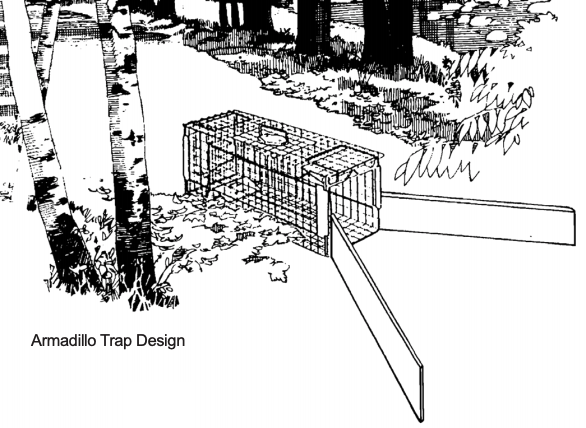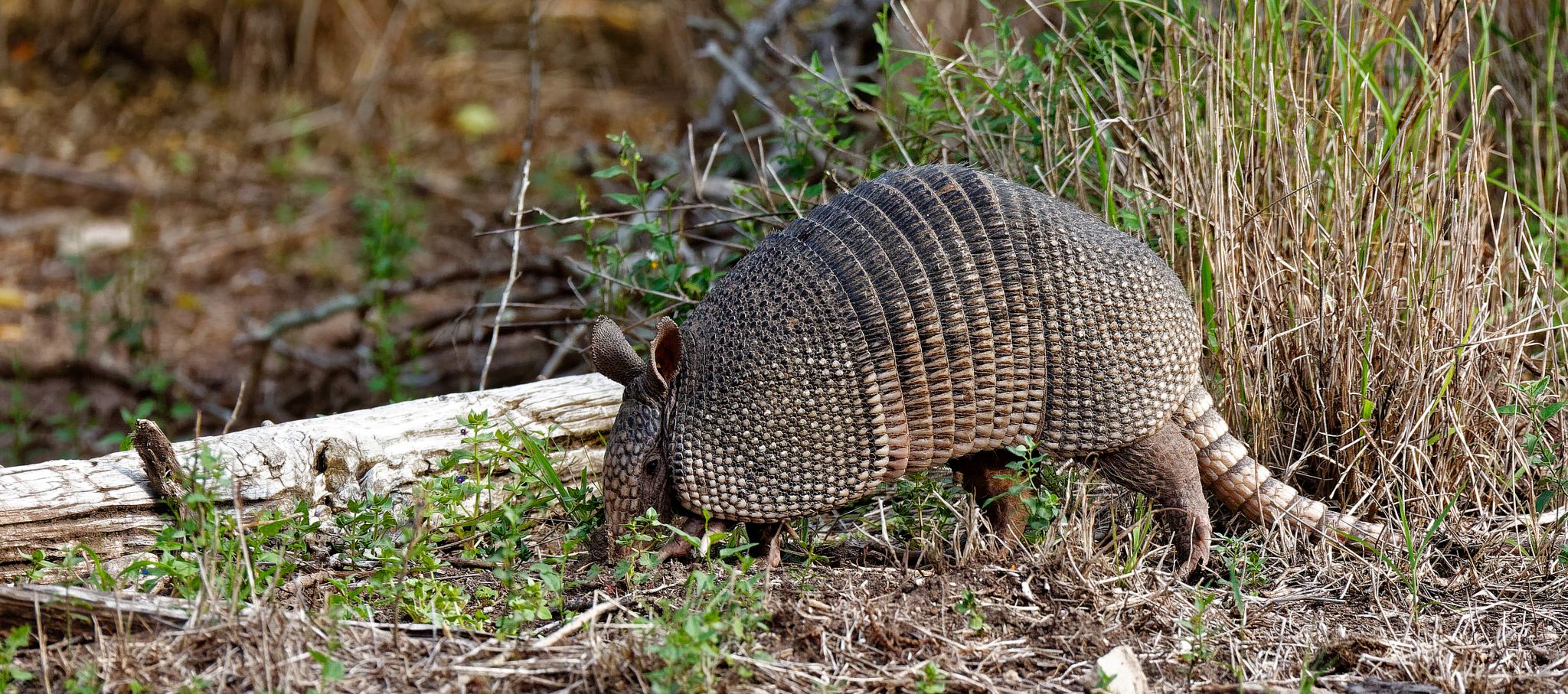Forestry & Wildlife

Take a ride on just about any road in Alabama and you are likely to see an armadillo belly-up on the side of the road. Armadillos were first noted in Alabama in the 1940s around Mobile County.
Since then they have expanded their range to 59 of Alabama’s 67 counties. Only the rocky, mountainous region of northeastern Alabama is without armadillos. As armadillo populations expand, the possibility of negative encounters with humans increases. This publication is designed to give you some general information on armadillos, their damage, and their control.
Identification
The nine-banded armadillo (Dasypus novemcinctus) is so named because of the nine moveable rings of armor between the shoulder and the hip shields. It has a long tail that is also protected by rings of armor. Three toe prints and sharp claw marks are typical of armadillo tracks. Armadillos are about the size of opossums.
Behavior
Understanding the life history and habits of armadillos is helpful in developing an effective control program. Armadillos are mainly nocturnal, which means they are active at night. However, they occasionally move about during the day. They burrow in the ground and have strong legs adapted for digging. They root about in ground litter searching for insects, grubs, and other invertebrates. While searching for food, they seem oblivious to any thing else and may come very close to human beings before becoming alarmed. When startled, they jump in the air—this behavior greatly reduces their chances of surviving an encounter with a vehicle. Armadillos make a great deal of noise while traveling through the woods, and many deer hunters have been disappointed to discover that the trophy buck they heard was actually an armadillo searching for food.
Damage Identification
As armadillos search for food, they dig small holes in the ground. These holes are about 3 inches wide and 5 inches deep. Armadillos will also up-root flowers and other vegetation in loose soils. This characteristic makes them particularly troublesome around gardens.
Damage Identification
As armadillos search for food, they dig small holes in the ground. These holes are about 3 inches wide and 5 inches deep. Armadillos will also up-root flowers and other vegetation in loose soils. This characteristic makes them particularly troublesome around gardens.
Health Threats
Armadillos have been known to carry the bacterium associated with human leprosy (Mycobacterium leprae), but there has been no conclusive evidence that human beings can con-tract leprosy from contact with armadillos. The Field Manual of Wildlife Diseases in the Southeastern United States states:
…Whether humans can contract infection (leprosy) from armadillos is debatable, although case histories suggest that a few occurrences of leprosy among armadillo handlers in Texas may have been acquired during many years of catching, handling, skinning, and eating armadillos. A widely accepted hypothesis is that the organism exists in the soil in certain regions, especially Louisiana and coastal Texas, and that both armadillos and humans contract infection from this environmental source.
While the health threat from armadillos may be minimal, their feeding habits can cause severe damage to lawns and gardens. Here are some suggestions for controlling them.
Damage Control
Since they feed on invertebrates in the ground, eliminating the food source will often cause armadillos to look elsewhere for food. However, ridding the soil and vegetation of all insects, worms, and grubs may not be practical and may be detrimental to the plants and other life forms in the area.

Live traps baited with overripe fruit, such as apples or bananas, can be used to catch problem armadillos. These traps are more effective when “wings” are added to direct the animal into the trap (see illustration below). Set the traps in the area where the damage is occurring, for example, around the house, in the flower garden, or in the vegetable garden. Captured animals can then be released in another area.
If the damage is isolated to a garden area, an electric fence may be an effective form of control. A single strand 3 to 4 inches off the ground should be sufficient. Polytape electric fence wire with a New Zealand-type charger makes an effective and safe exclusion device. However, be very careful when placing a fence in areas where children may play.
Spotlighting and shooting armadillos at night is an effective and selective method. However, this method requires constant vigilance to find the animal. In addition, local regulations on discharging firearms may prohibit this activity.
No toxicant, fumigants, or repellents are currently registered for armadillo control. However, since damage is usually localized, the control measures suggested here should be useful.
Armadillos are becoming more common in Alabama. If they become troublesome in your area, follow the steps recommended here and contact your county Extension agent for more information.
Download a PDF of Controlling Armadillo Damage in Alabama, ANR-0773.

